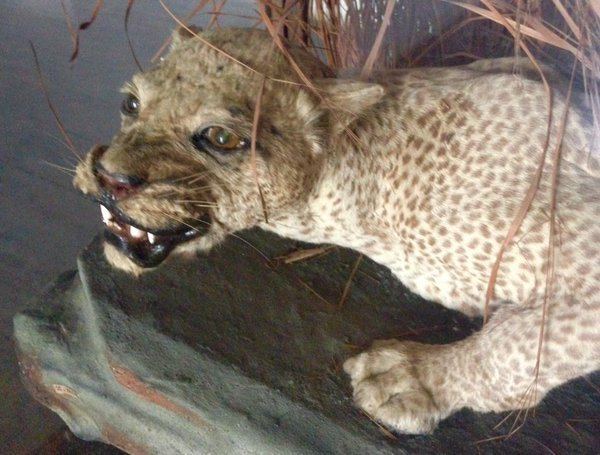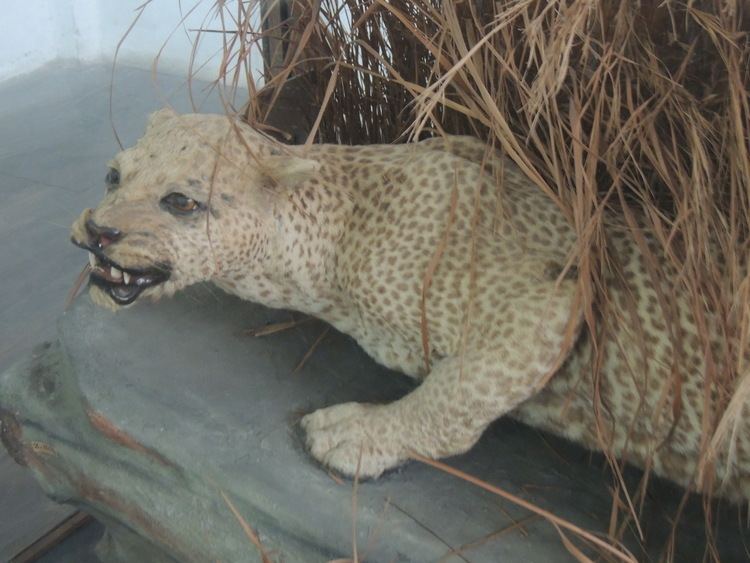Phylum Chordata Genus Panthera Rank Subspecies | ||
 | ||
Similar Barbary leopard, Indochinese leopard, Sinai leopard, Anatolian leopard, North‑Chinese leopard | ||
The Zanzibar leopard (Panthera pardus adersi) was described as a leopard subspecies by Pocock in 1932. Following genetic analysis in the 1990s, this population is grouped with the African leopard (P. p. pardus).
Contents
- National geographic zanzibar leopards
- Evolutionary history
- Biology and behavior
- Demonization and extermination
- Conservation and other proposals
- References

This population used to inhabit the Unguja Island in the Zanzibar archipelago, part of Tanzania, but is possibly extinct. Increasing conflict between people and leopards in the 20th century led to their demonization and determined attempts to exterminate them. Efforts to develop a leopard conservation program in the mid-1990s were shelved when wildlife researchers concluded that there was little prospect for the population's long-term survival.

National geographic zanzibar leopards
Evolutionary history

The evolutionary history of the Zanzibar leopard parallels that of other endemics on Unguja, including the Zanzibar servaline genet and the Zanzibar red colobus. It is thought to have evolved in isolation from the African leopard since at least the end of the Ice Age, when the island was separated from mainland Tanzania by rising sea levels. The founder effect and adaptation to local conditions produced a smaller leopard than its continental relatives and one that has “changed its spots”, in that its more numerous rosettes have partially disintegrated into spots.
Biology and behavior

The biology and behavior of the Zanzibar leopard are poorly understood. Only six skins have been located in museums, including the type specimen in the Natural History Museum, London, and a much-faded mounted specimen in the Zanzibar Museum. The Zanzibar leopard has never been studied in the wild and the last time a researcher claimed in print to have seen one was in the early 1980s. Most zoologists presume the Zanzibar leopard to be extinct or very nearly so. However, Zanzibar government statistics indicate that leopards were still being killed by hunters in the mid-1990s, and islanders continue to report sightings and the predation of livestock.
Demonization and extermination
Rural Zanzibaris’ descriptions of the leopard and its habits are characterized by the widespread belief that a large number of these carnivores are kept by witches and sent by them to harm or otherwise harass villagers. This belief comes together with an elaborate package of ideas about how leopards are bred, trained, exchanged and sent to do the evil bidding of their owners. For local farmers this supplies a neat explanation for predation by leopards, and more generally for their appearance "out of place" in the vicinity of farms and villages.
The growth of human population and agriculture in the 20th century was largely responsible for this state of affairs, as people encroached on the habitat of leopards and the animals they preyed upon. Increasing conflict with leopards and the fear that this generated led to a series of campaigns to exterminate them. These were localized at first, but became island-wide after the Zanzibar Revolution of 1964, when a combined anti-witchcraft and leopard-killing campaign was launched under the leadership of Unguja’s most famous witch-finder, Kitanzi. The long-term result of this campaign and the subsequent classification of leopards as “vermin” was to bring them to the brink of extinction.
Conservation and other proposals
Serious attention was not paid to the Zanzibar leopard's plight until the mid-1990s, by which time some authorities were already listing it as extinct. A leopard conservation program was drafted by the CARE-funded Jozani-Chwaka Bay Conservation Project, but abandoned in 1997 when wildlife researchers failed to find evidence for the leopard's continuing presence in and around Jozani forest.
Local wildlife officials, however, have remained more optimistic about the leopard's survival, and some Zanzibaris have proposed approaching alleged leopard keepers in order to ask them to display their leopards to paying visitors. Villagers sometimes offer to take tourists or researchers to see "domesticated" leopards in return for cash, but so far none of these "kept leopard chases" has been known to end in a successful sighting.
These conflicting perceptions of the Zanzibar leopard's status and the possibility of its conservation have yet to be reconciled, presenting a dilemma that has been highlighted by researchers.
